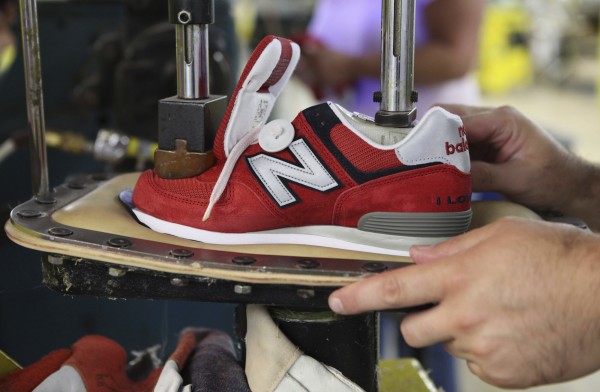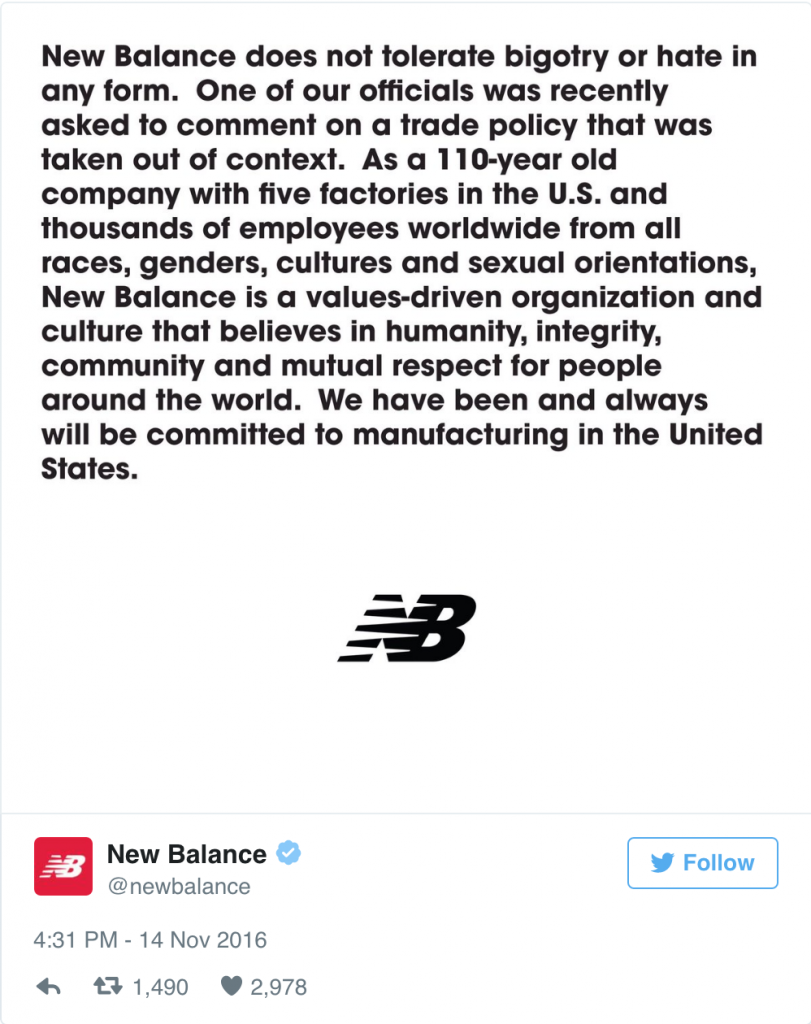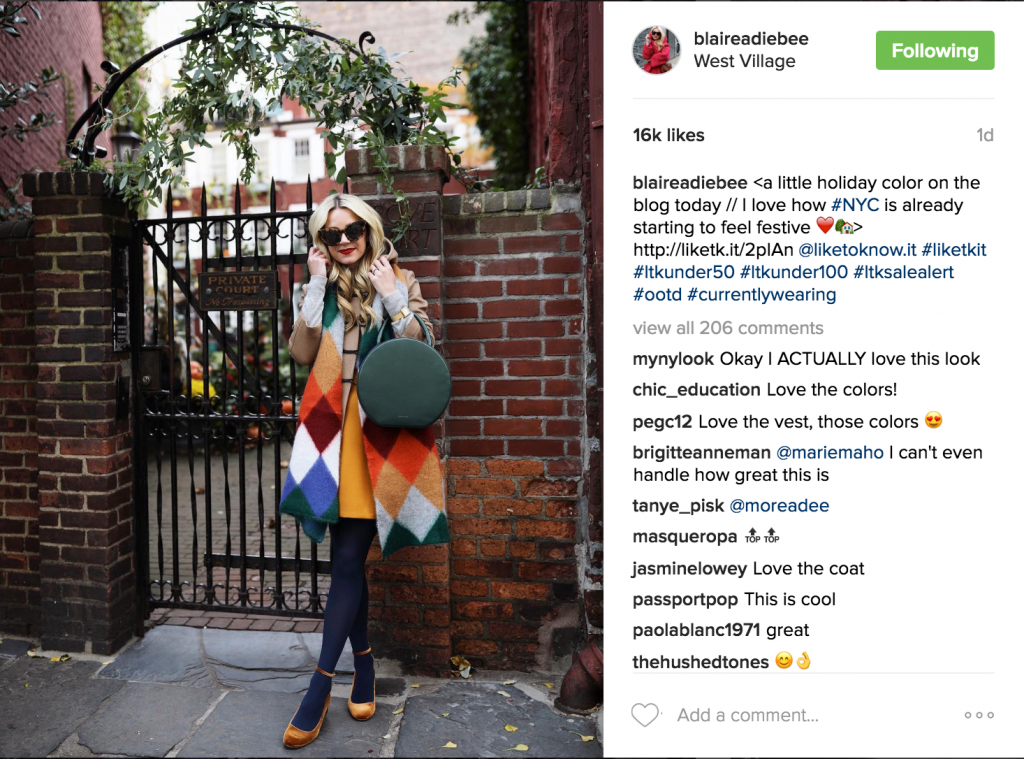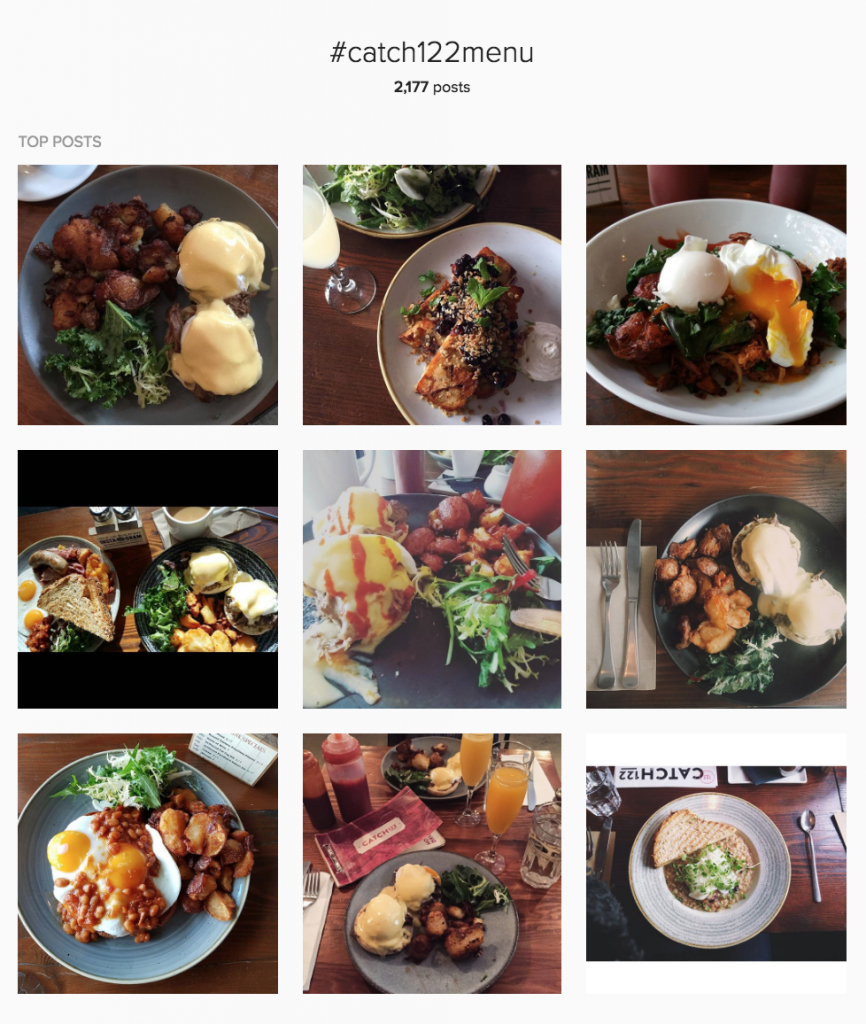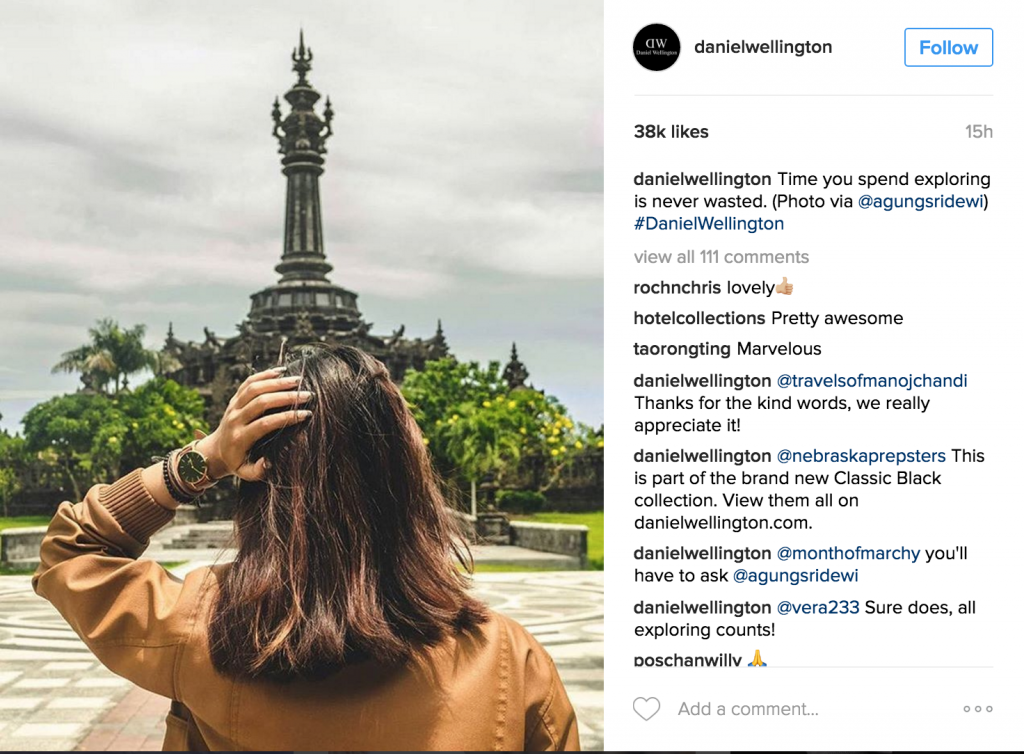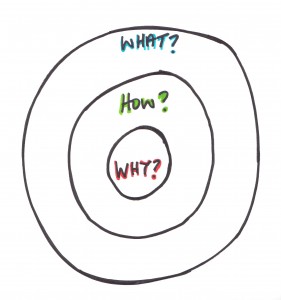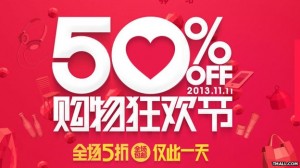The day after Donald Trump’s election victory, the footwear company New Balance encountered a postelection backlash. Its Vice President for communications, Matt LeBretton, remarked on Trump’s victory that “we feel things are going to move in the right direction” in an interview with a Wall Street Journal reporter, Sara Germano, who published them on Twitter.
Customers reacted furiously to this comment and social media were soon awash with videos of New Balance shoes being destroyed. The company responded swiftly to this issue and attempted to cool things down by claiming that the comment was taken out of context.
Unlike other social media crisis such as the time when Toyota had to recall faulty auto parts, there is no such actual thing that New Balance could fix this time. The company was in a particularly tough position because it was aligned was a bad public image and the backlash was caused by people’s interpretation, rather than concrete facts.
New Balance then did not respond to media’s request for interviews, which is the correct move in this case. However, it tweeted on the day after, saying it welcomed “all walks of life”.
But how could you expect the angry public to trust on it when they are in the middle of the fury? Whatever it says at the moment might be subject to people’s misinterpretation and will only worsen the situation. Dealing with this kind of social media crisis, New Balance should have a plan in place, keep silent till the storm is over and then make any clarification or apology it wants.

